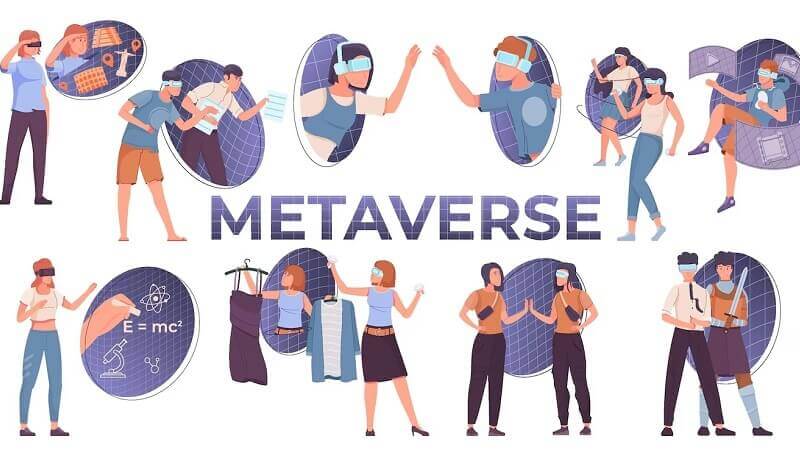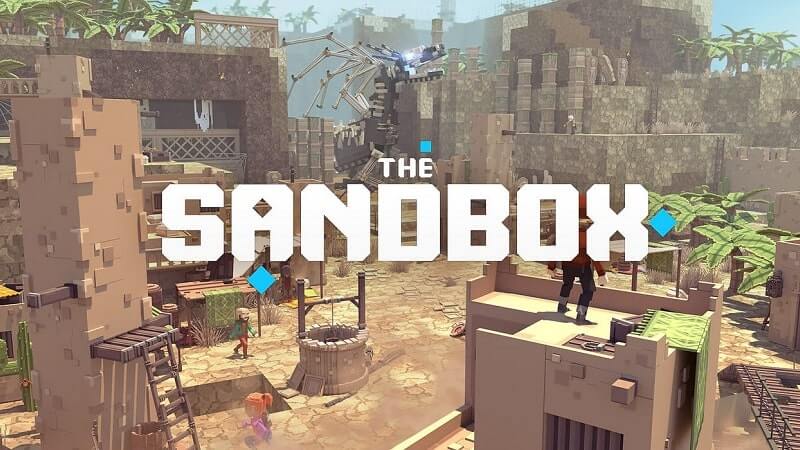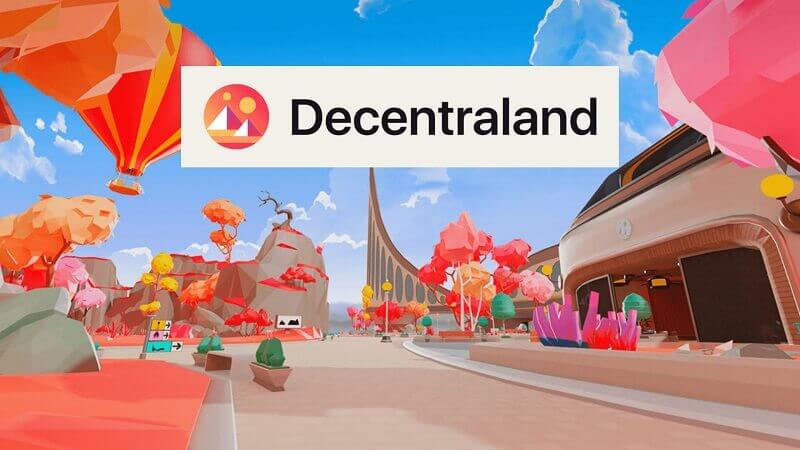“Metaverse” is a term that has gained increasing attention in recent years, especially in the wake of the pandemic, which has accelerated the adoption of digital technologies.
While the concept of the Metaverse has been around since the early days of the internet, it has evolved to encompass a more comprehensive and immersive digital space that goes beyond the boundaries of traditional virtual worlds.
In this article, we’ll explore what the Metaverse is, how it works, the brands and companies involved in its development, and the benefits and implications of its existence.

What is the Metaverse?
The Metaverse is a collective virtual shared space that allows users to interact with a computer-generated environment and with other users in real-time.
The term was first coined by science-fiction author Neal Stephenson in his 1992 novel Snow Crash, where he described a virtual world where people could engage in various activities, such as shopping, gaming, and socializing.
The Metaverse is different from traditional virtual reality (VR) and augmented reality (AR) environments in that it aims to create a persistent and interconnected world that is not limited to a single application or platform.
The Metaverse is envisioned as a seamless extension of the internet, where users can move between different virtual spaces without interruption.
Key features and characteristics of the Metaverse
The Metaverse has several key features that set it apart from other digital environments.
One of the main characteristics of the Metaverse is its persistence. Unlike traditional VR and AR experiences, where the virtual environment is reset every time the user exits the application, the Metaverse is a persistent digital space that remains active even when users are not present.
Another key feature of the Metaverse is its interconnectivity. The Metaverse is designed to be a network of interconnected virtual spaces, each with its own rules and characteristics, but all part of the same digital universe. Users can move between these spaces seamlessly, without having to leave the Metaverse.
Finally, the Metaverse is highly immersive. It is designed to be a fully interactive and immersive environment that allows users to engage with it using a variety of input devices, such as motion sensors, voice recognition, and haptic feedback.
How is the Metaverse different from virtual reality (VR) and augmented reality (AR)?
The Metaverse is different from virtual reality (VR) and augmented reality (AR) in several ways.
Firstly, VR typically refers to a completely immersive digital environment where users are fully immersed in a simulated world. In contrast, the Metaverse is a persistent digital space that is not limited to a single application or platform, and it aims to create a seamless extension of the internet that allows users to move between different virtual spaces without interruption.
Secondly, AR refers to the integration of digital elements into the real world, typically through a device such as a smartphone or smart glasses. In contrast, the Metaverse is a fully immersive virtual environment that users enter into through a computer or other digital device.
Finally, the Metaverse is designed to be a social and interconnected space that allows users to interact with other users in real-time, while VR and AR experiences are often focused on individual experiences. The Metaverse aims to create a persistent and interconnected world that allows users to engage in various activities, such as socializing, gaming, shopping, and learning, all within a single digital universe.

How does the Metaverse work?
The Metaverse is a complex system that requires a robust technical infrastructure to support its many features and functionalities. At its core, the Metaverse relies on a combination of technologies, including cloud computing, blockchain, and artificial intelligence (AI).
One of the essential components of the Metaverse is its blockchain-based system, which provides a secure and decentralized framework for transactions and interactions between users and digital assets. The use of blockchain technology also allows for the creation of unique digital assets, such as virtual real estate, that can be owned and traded by users within the Metaverse.
Examples of Metaverse platforms and their functionalities
There are already several Metaverse platforms available, each with its own unique features and functionalities. Some of the most well-known Metaverse platforms include:
- Second Life: one of the earliest and most well-known virtual worlds, Second Life allows users to create and customize their avatars, interact with other users, and buy and sell virtual goods and services.
- Decentraland: a blockchain-based Metaverse platform that allows users to create and explore virtual worlds using non-fungible tokens (NFTs).
- Roblox: a popular gaming platform that has recently expanded into the Metaverse space, offering users a variety of virtual experiences, such as concerts, game shows, and social hangouts.
- Fortnite: a massively multiplayer online game that has also started to explore Metaverse-like features, such as virtual concerts and in-game social spaces.
Fun fact: in some of these platforms, users have celebrated a real metaverse wedding.

Metaverse advantages
Here’s an overview of some of the advantages of the metaverse:
- Seamless integration of digital and physical worlds: The metaverse represents a new paradigm in digital technology, where the boundaries between the physical and digital worlds are blurred. By creating a persistent and interconnected virtual space, the metaverse allows for a seamless integration of digital and physical experiences, enabling new forms of interaction and engagement.
- Increased accessibility: The metaverse has the potential to increase accessibility for individuals who may face physical, social, or economic barriers to participation in traditional activities. For example, people with disabilities may be able to engage in social and recreational activities in the metaverse that they may not be able to participate in otherwise.
- New opportunities for creativity and self-expression: The metaverse provides a new and immersive platform for people to express themselves creatively and explore new forms of self-expression. By allowing users to create and customize their avatars, virtual spaces, and digital assets, the metaverse offers a wide range of creative outlets that can foster innovation and experimentation.
- New revenue streams for businesses: The metaverse offers significant opportunities for businesses and entrepreneurs to create new revenue streams and business models. By leveraging the unique features of the metaverse, such as virtual real estate and digital assets, companies can create entirely new products and services that can be monetized in a variety of ways.
- Enhanced social and cultural experiences: The metaverse has the potential to enhance social and cultural experiences by creating a new and immersive platform for people to engage with each other and with cultural artifacts. For example, virtual museums, galleries, and performances can offer new ways for people to experience art and culture in a more interactive and engaging way.

Challenges and potential solutions
One of the main challenges facing the Metaverse is scalability. As the number of users and virtual spaces in the Metaverse grows, so does the demand for processing power and bandwidth. To ensure that the Metaverse remains accessible and enjoyable for all users, developers will need to find new ways to scale the platform without sacrificing performance.
One potential solution for Metaverse scalability is the use of cloud computing. By leveraging cloud-based resources, developers can offload some of the processing and storage demands of the Metaverse to remote servers, reducing the strain on individual users’ devices.
Another solution is the use of edge computing, which involves placing computing resources closer to the user, reducing the latency and bandwidth requirements of the Metaverse. Additionally, the use of AI and machine learning algorithms can help optimize the performance and scalability of the Metaverse by predicting and mitigating potential bottlenecks and optimizing resource allocation.

Brands and companies in the Metaverse
The Metaverse represents a significant opportunity for businesses and brands to engage with customers in new and innovative ways.
Many major companies have already entered the Metaverse space, with plans to leverage the platform for marketing, customer engagement, and e-commerce.
Some of the most notable companies in the Metaverse space include:
- Facebook: the social media giant recently rebranded as Meta and announced plans to invest heavily in the development of the Metaverse.
- Nike: the sportswear company has already created virtual stores and experiences within the Metaverse, allowing customers to try on virtual shoes and purchase them in the real world.
- BMW: the car manufacturer has created a virtual showroom within the Metaverse, allowing users to explore and customize virtual versions of their cars.
Use cases of Metaverse applications in different industries
The Metaverse has the potential to disrupt a wide range of industries, from gaming and entertainment to e-commerce and education.
Some of the most promising use cases for Metaverse applications include:
- Gaming: the Metaverse offers a new level of immersion and interactivity for gaming, allowing developers to create complex and engaging virtual worlds that blur the line between reality and fantasy.
- Education: the Metaverse can be used as a platform for immersive and interactive educational experiences, allowing students to explore and learn about a wide range of subjects in a more engaging and memorable way.
- Real estate: the Metaverse can be used to create a virtual real estate market, allowing users to buy, sell, and rent virtual properties within the Metaverse.
Opportunities and risks for businesses entering the Metaverse
While the Metaverse represents a significant opportunity for businesses, it also carries some risks and challenges.
One of the main risks for businesses entering the Metaverse is the potential for brand dilution and loss of control. In a decentralized and open platform like the Metaverse, it can be challenging for businesses to maintain brand consistency and ensure that their messaging is not lost in the noise.
Another challenge for businesses entering the Metaverse is the need to navigate complex legal and regulatory frameworks. As the Metaverse continues to grow and evolve, regulators will need to develop new rules and guidelines to ensure that the platform remains safe and fair for all users.
If brands figure out how to enter the metaverse and make profit, their profits could skyrocket!

Active users in metaverse
The exact number of active users in the metaverse is difficult to measure, as different platforms and games may use different metrics and definitions for user activity.
However, some estimates suggest that there are currently tens of millions of active users in the metaverse (yes, millions of users! It’s not another metaverse meme), with this number expected to grow significantly in the coming years as the technology becomes more advanced and accessible.
The growth of active users in the metaverse has significant implications for businesses and brands looking to engage with consumers in new and innovative ways.
Metaverse and gaming industry
Metaverse games are video games that are set within a persistent and interconnected virtual world. These games are designed to be highly immersive and engaging, allowing players to explore and interact with the digital environment and with other players in real-time.
One of the defining features of metaverse games is their open-world nature. Unlike traditional video games, which are often limited to specific levels or missions, metaverse games are designed to be expansive and free-form, allowing players to explore the virtual world at their leisure and engage with a wide range of activities, such as socializing, gaming, shopping, and learning.
These games can take many different forms, ranging from massively multiplayer online role-playing games (MMORPGs) to open-world sandbox games.
Some of the most popular metaverse games include Second Life, Decentraland, and The Sandbox, each with their own unique features and mechanics.
Conclusion
The Metaverse is a fascinating and rapidly evolving concept that has the potential to transform the way we interact with digital technology.
While there are still many challenges and uncertainties around the development and adoption of the Metaverse, it’s clear that the platform offers significant opportunities for businesses, developers, and users alike.
By understanding the key features and characteristics of the Metaverse, as well as the benefits and risks associated with its development, we can start to prepare for a future where the lines between reality and virtuality become increasingly blurred.

FAQs about the metaverse
Below you will find answers to some frequently asked questions about the metaverse.
What is a defining feature of the metaverse?
One of the defining features of the metaverse is its persistence. Unlike traditional virtual reality (VR) and augmented reality (AR) experiences, where the virtual environment is reset every time the user exits the application, the metaverse is a persistent digital space that remains active even when users are not present. Additionally, the metaverse is highly immersive and interconnected, designed to be a fully interactive and seamless extension of the internet.
How does the metaverse make money?
The metaverse can generate revenue through a variety of mechanisms, such as virtual goods and services, advertising, subscriptions, and transaction fees. For example, users can buy and sell virtual assets, such as clothing, real estate, and virtual currency, within the metaverse. Additionally, businesses can use the metaverse as a platform for marketing and customer engagement, as well as for e-commerce and virtual events.
What can you do in the metaverse?
In the metaverse, users can engage in a wide range of activities, such as socializing, gaming, shopping, learning, and creating. Users can interact with other users in real-time, explore virtual environments, and participate in virtual events, such as concerts and conferences. Additionally, users can create and customize their avatars, buy and sell virtual goods and services, and own and trade virtual assets, such as real estate and digital art.
Who made the metaverse?
The concept of the metaverse has been around since the early days of the internet, and it has been popularized by science-fiction authors and filmmakers. However, the development of the metaverse as a comprehensive and immersive digital space has been driven by a wide range of individuals and organizations, including tech companies, entrepreneurs, and blockchain enthusiasts. Some of the most well-known metaverse platforms and projects include Second Life, Decentraland, and the Sandbox.